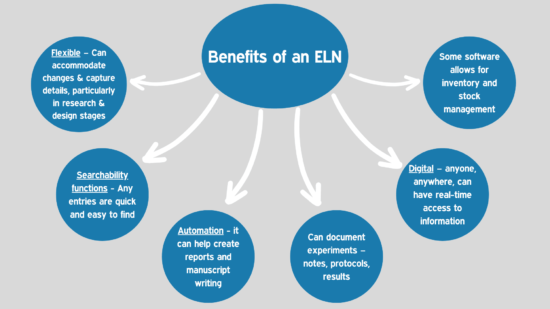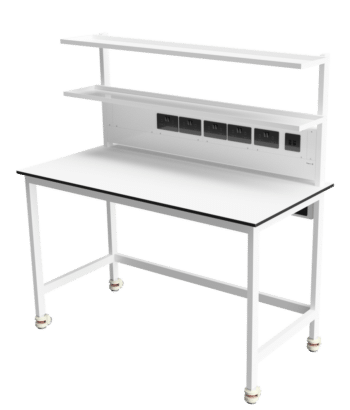What is an ELN
An ELN is an Electronic Laboratory Notebook. Traditionally, information would be kept in a paper laboratory notebook – which is why it’s easy to assume that this is simply the digital version. However, the technology involved has advanced significantly. ELNs can now provide labs with an effective workflow management tool in their own right.
ELNs can provide graphing and analysis tools acting as a place to store information and data normally gathered from multiple easily lost sources, such as physical notebooks and paper. They also tend to collect less structured data, such as any ad hoc changes or personal observations traditionally jotted down in a lab book.
Keeping these types of data in an ELN can be queried and assembled for easy reporting or analysis at any time.
ELN vs LIMS
Both LIMS and ELN are purpose-built systems intended to manage workflows. It can be helpful to stay up to date with their functions to fully understand any similarities and differences between the two.

LIMS is a Laboratory Information Management System which can help integrate laboratory operations with the laboratory itself by providing requisite information. This workflow management system was created in the 80s – before ELN first emerged. Therefore, many labs will have come across LIMS long before encountering an ELN system.
A LIMS system can monitor inventory, create stock alerts, and track or label test results or data. This process is sped up by bringing together several subprocesses to streamline human effort, which not only saves time but also improves data access for everyone involved in a project.
Different types of LIMS can also be set up with varying functionalities depending on the current needs of the lab. Whether the focus is on capturing data, curating the best storage facilities, or collecting system information, LIMS is more flexible in this department.
What’s the difference between ELN and LIMS?
The main difference between the two is that LIMS are associated with structured and repeated workflows, while ELNs are linked with changing and flexible workflows. While ELNs can be useful for managing less structured lab data, LIMS can benefit a lab with more structured data.
There are also differences in the benefits you can reap from the two systems.
One of the major benefits of an ELN is that digitalisation and the option of setting it up on a cloud-based system allow researchers to share and access real-time data and protocols from anywhere in the world. In this era of remote working, ELNs prove that this is an essential feature for a workflow management system.
Find some of the other major benefits below…

Meanwhile, the benefits of a LIMS system include improved quality due to seamless integration, automated reports, and quicker solutions for finding information.
How to decide between an ELN and a LIMS
When choosing between an ELN and a LIMS, you should select the tool that best fits your needs. Neither one is necessarily better than the other since they have entirely different functions.
LIMS might serve your lab better if your workflow processes tend to have more structured data involved, while labs with less structured workflows and data might benefit more from an ELN.
- ID numbers
- Audit information
- Testing procedures
- Sample data
- Compliance information
- Test data
Meanwhile, an ELN will be better suited to the following data:
- Ad hoc changes
- Molecular models
- Personal notes & observations
- Images
- Lab documents
Some organisations could benefit from installing and implementing both systems. Since each one is optimised for different types of data, they can be treated separately to deal with it or can be integrated to maximise usefulness. For example, the ELN can be used to manage the data from experimental stages, while the LIMS can help you manage the diagnostic test results.
Utilising both can boost productivity and reduce data corruption from transcription errors when dealing with the different types of data you might come across when working in a lab. If your workflow management appears to be lacking with just one of these systems, then it might be worth considering how the other could be serving you.
Need a redesigned lab to optimise your work with your LIMS or ELN workflow management system? The team at InterFocus can help. For more information about our bespoke fitted labs, visit our homepage or call our team on 01223 894 833.




